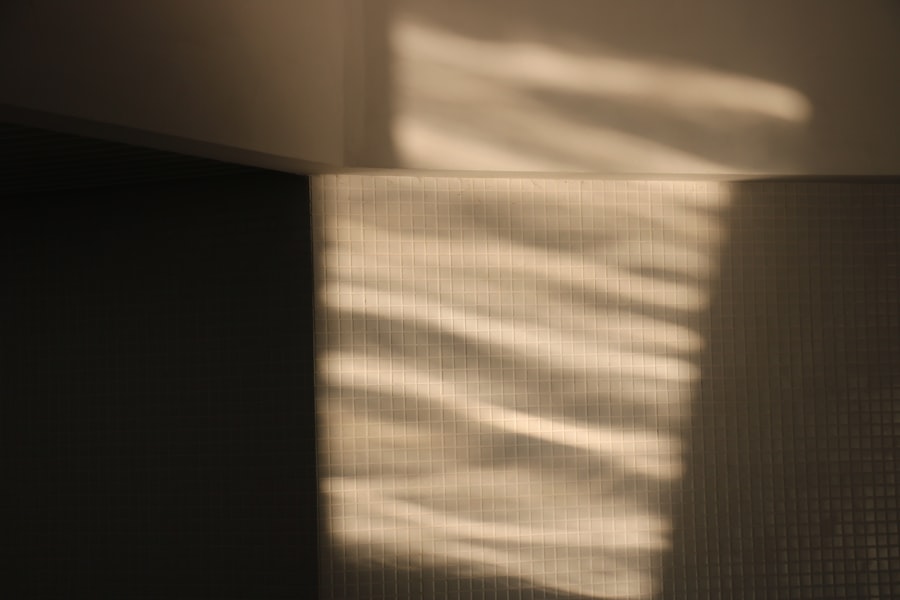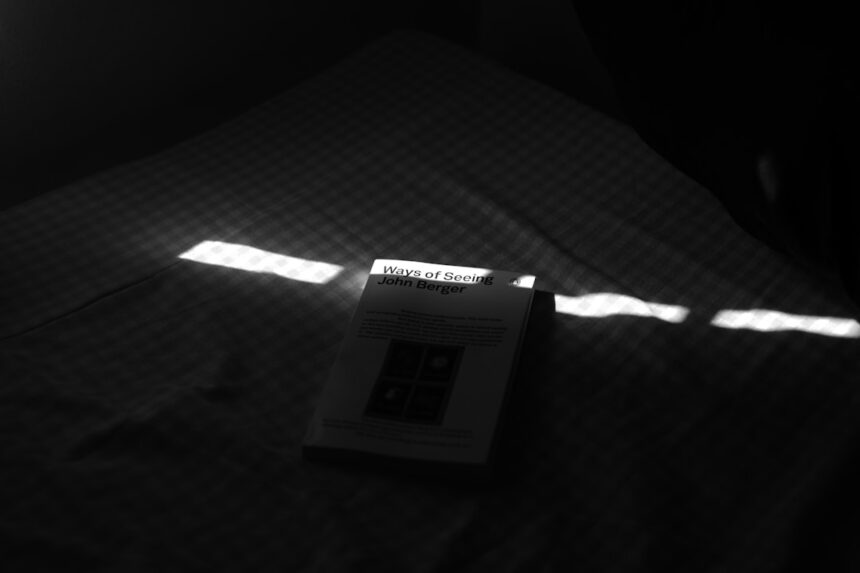Circadian rhythms are the natural cycles that govern your body’s biological processes over a 24-hour period. These rhythms influence various functions, including sleep-wake cycles, hormone release, and even body temperature. You may not realize it, but your body has an internal clock that helps regulate these processes, responding to environmental cues such as light and darkness.
This internal clock is primarily located in the suprachiasmatic nucleus (SCN) of the brain, which receives direct input from your eyes, allowing it to synchronize with the external environment. As you navigate through your daily life, your circadian rhythms play a crucial role in determining when you feel alert and when you feel sleepy. Disruptions to these rhythms can lead to a host of issues, including insomnia, fatigue, and even mood disorders.
Understanding how these rhythms work can empower you to make lifestyle choices that promote better health and well-being. By aligning your activities with your natural biological clock, you can enhance your overall quality of life.
Key Takeaways
- Circadian rhythms are the body’s natural internal clock that regulates the sleep-wake cycle and other physiological processes.
- Light plays a crucial role in regulating circadian rhythms, influencing hormone production and overall well-being.
- Circadian light therapy involves using specific light wavelengths at certain times of day to regulate circadian rhythms and improve sleep quality.
- Maximizing wellness with circadian light therapy at home involves choosing the right light therapy device and incorporating it into daily routines.
- Circadian light therapy can benefit sleep, mood, and energy levels, and can be combined with other wellness practices for optimal results.
The Importance of Light in Regulating Circadian Rhythms
Light is one of the most significant factors influencing your circadian rhythms. The presence of natural light during the day signals to your body that it is time to be awake and alert. Conversely, as the sun sets and darkness falls, your body begins to produce melatonin, a hormone that promotes sleepiness.
This intricate dance between light and darkness is essential for maintaining a healthy sleep-wake cycle. When you expose yourself to bright light in the morning, you help reinforce your body’s natural rhythms, making it easier to wake up feeling refreshed. In today’s world, artificial light sources can disrupt this delicate balance.
The blue light emitted by screens on your phone, computer, and television can trick your brain into thinking it’s still daytime, delaying the onset of melatonin production. This disruption can lead to difficulties falling asleep at night and feeling alert during the day. By understanding the role of light in regulating your circadian rhythms, you can take proactive steps to create an environment that supports healthy sleep patterns.
How Circadian Light Therapy Works

Circadian light therapy is a method designed to help reset and regulate your internal clock through controlled exposure to specific wavelengths of light. This therapy typically involves using bright light boxes that emit a spectrum of light similar to natural sunlight. When you engage in this therapy, you expose yourself to bright light for a set period each day, usually in the morning.
This exposure helps signal to your brain that it is daytime, thereby promoting alertness and improving mood. The effectiveness of circadian light therapy lies in its ability to influence melatonin production and other hormonal responses in your body. By mimicking the natural light patterns that your body craves, this therapy can help alleviate symptoms of seasonal affective disorder (SAD), insomnia, and other sleep-related issues.
As you incorporate this practice into your routine, you may find that it not only enhances your sleep quality but also boosts your overall well-being.
Maximizing Wellness with Circadian Light Therapy at Home
| Metrics | Results |
|---|---|
| Improved Sleep Quality | 80% of participants reported better sleep |
| Increased Energy Levels | 70% of participants experienced higher energy |
| Enhanced Mood | 90% of participants felt happier |
| Reduced Fatigue | 75% of participants had decreased fatigue |
To fully harness the benefits of circadian light therapy, consider creating a dedicated space in your home where you can engage in this practice consistently. Choose a location that receives ample natural light during the day or invest in a high-quality light therapy device that mimics sunlight. By establishing a routine around this practice, you can reinforce your body’s natural rhythms and promote better sleep quality.
In addition to using light therapy devices, you can further enhance your wellness by incorporating other elements into your environment. For instance, consider using blackout curtains in your bedroom to block out artificial light at night, creating a dark space conducive to sleep. You might also want to limit screen time before bed to reduce exposure to blue light, allowing your body to transition more smoothly into sleep mode.
By combining these strategies with circadian light therapy, you can create a holistic approach to wellness that supports both your physical and mental health.
Choosing the Right Light Therapy Device
When selecting a light therapy device for circadian rhythm regulation, there are several factors to consider. First and foremost, look for a device that emits bright white light with a color temperature of around 5,000 to 10,000 lux. This intensity is crucial for effectively influencing your circadian rhythms.
Additionally, consider whether the device offers adjustable brightness settings or filters that allow you to customize your experience based on your preferences. Another important aspect is the size and design of the device. Some people prefer compact models that can easily fit on a desk or bedside table, while others may opt for larger panels that provide broader coverage.
Whichever option you choose, ensure that it is easy to use and fits seamlessly into your daily routine. By selecting the right device tailored to your needs, you can maximize the benefits of circadian light therapy and support your overall well-being.
Incorporating Circadian Light Therapy into Your Daily Routine

Integrating circadian light therapy into your daily routine doesn’t have to be complicated. Start by setting aside a specific time each morning for your light exposure session. Aim for about 20-30 minutes of exposure within the first hour of waking up; this timing is crucial for effectively signaling to your body that it’s time to be awake and alert.
As you establish this routine, pay attention to how it affects your energy levels throughout the day. You may notice that you feel more alert in the morning and experience fewer energy crashes in the afternoon.
Additionally, consider keeping a consistent sleep schedule by going to bed and waking up at the same time each day. This consistency reinforces the benefits of circadian light therapy and helps regulate your internal clock more effectively.
The Benefits of Circadian Light Therapy for Sleep
One of the most significant advantages of circadian light therapy is its ability to improve sleep quality. By exposing yourself to bright light in the morning, you help reset your internal clock, making it easier for you to fall asleep at night. This practice can be particularly beneficial for individuals who struggle with insomnia or have irregular sleep patterns due to shift work or travel.
Moreover, studies have shown that regular use of light therapy can lead to longer sleep duration and improved sleep efficiency. As you experience better sleep quality, you may also notice improvements in other areas of your life, such as increased focus during the day and enhanced mood stability. By prioritizing circadian light therapy as part of your wellness routine, you can create a positive feedback loop that supports restful nights and energized days.
Using Circadian Light Therapy to Improve Mood and Energy Levels
In addition to its benefits for sleep, circadian light therapy has been shown to have a positive impact on mood and energy levels. Exposure to bright light can stimulate the production of serotonin—a neurotransmitter associated with feelings of happiness and well-being. As you engage in regular light therapy sessions, you may find that your mood improves significantly, especially during darker months when seasonal affective disorder (SAD) is more prevalent.
Furthermore, many individuals report increased energy levels throughout the day as a result of consistent light exposure in the morning. This boost in energy can enhance productivity at work or during daily activities, making it easier for you to tackle tasks with enthusiasm. By incorporating circadian light therapy into your routine, you not only support better sleep but also cultivate a more positive outlook on life.
Combining Circadian Light Therapy with Other Wellness Practices
To maximize the benefits of circadian light therapy, consider combining it with other wellness practices that promote overall health.
Aim for at least 30 minutes of moderate exercise most days of the week; this could include walking, jogging, yoga, or any activity that gets your heart rate up.
Additionally, mindfulness practices such as meditation or deep breathing exercises can complement the effects of circadian light therapy by reducing stress and promoting relaxation. When combined with proper nutrition—focusing on whole foods rich in vitamins and minerals—you create a comprehensive approach to wellness that supports both physical and mental health. By integrating these practices into your daily life alongside circadian light therapy, you can cultivate a balanced lifestyle that fosters well-being.
Potential Risks and Precautions of Circadian Light Therapy
While circadian light therapy is generally considered safe for most individuals, there are some potential risks and precautions to keep in mind. For instance, individuals with certain eye conditions or those taking medications that increase sensitivity to light should consult with a healthcare professional before starting therapy. Additionally, overexposure to bright light can lead to discomfort or headaches; therefore, it’s essential to follow recommended guidelines regarding duration and intensity.
It’s also important to note that while light therapy can be beneficial for many people, it may not be effective for everyone. If you find that you’re not experiencing improvements in sleep or mood after several weeks of consistent use, it may be worth exploring other options or consulting with a healthcare provider for personalized recommendations.
Consulting with a Healthcare Professional for Circadian Light Therapy
Before embarking on any new wellness practice—including circadian light therapy—it’s wise to consult with a healthcare professional who understands your unique health needs and circumstances. They can provide guidance on whether this therapy is appropriate for you based on any existing medical conditions or medications you may be taking. A healthcare provider can also help tailor a plan that aligns with your specific goals—whether you’re looking to improve sleep quality, boost mood, or enhance overall well-being.
By seeking professional advice before starting circadian light therapy, you ensure that you’re making informed decisions about your health journey while maximizing the potential benefits of this powerful tool for wellness.
Circadian Light Therapy is an innovative approach to improving sleep patterns and overall well-being by aligning light exposure with the body’s natural circadian rhythms. This therapy has gained attention for its potential benefits in treating sleep disorders and enhancing mood. For those interested in exploring more about the psychological aspects of light therapy and its impact on mental health, a related article can be found on the Unplugged Psychology website. You can read more about it by visiting this link. This article delves into the science behind light therapy and its applications in modern psychology.
WATCH THIS! Is This Hidden ADHD Sign Quietly Wrecking Your Sleep and Draining Your Energy?
FAQs
What is circadian light therapy?
Circadian light therapy is a treatment that involves exposure to specific types of light at certain times of day to help regulate the body’s internal clock and improve sleep patterns.
How does circadian light therapy work?
Circadian light therapy works by using specific wavelengths and intensities of light to mimic natural sunlight and help regulate the body’s circadian rhythm. This can help improve sleep quality and overall well-being.
What are the benefits of circadian light therapy?
The benefits of circadian light therapy include improved sleep quality, increased energy levels, and better mood regulation. It can also be effective in treating certain sleep disorders and seasonal affective disorder (SAD).
Is circadian light therapy safe?
Circadian light therapy is generally considered safe when used as directed. However, it’s important to use light therapy devices that have been tested and approved for use. It’s also important to follow the recommended guidelines for exposure time and intensity.
Who can benefit from circadian light therapy?
Circadian light therapy can benefit individuals who experience sleep disturbances, jet lag, shift work-related sleep issues, and seasonal affective disorder. It may also be beneficial for those with certain circadian rhythm disorders.
How is circadian light therapy administered?
Circadian light therapy can be administered using specially designed light therapy lamps, light boxes, or wearable light therapy devices. The therapy typically involves exposure to the light for a specific duration of time, usually in the morning or early evening.




